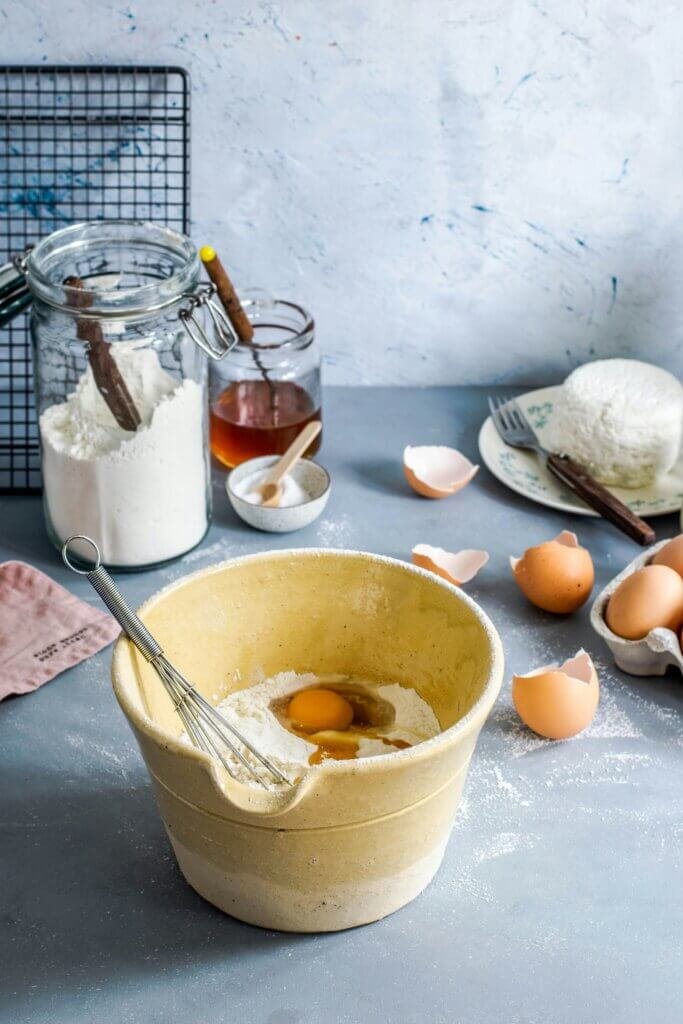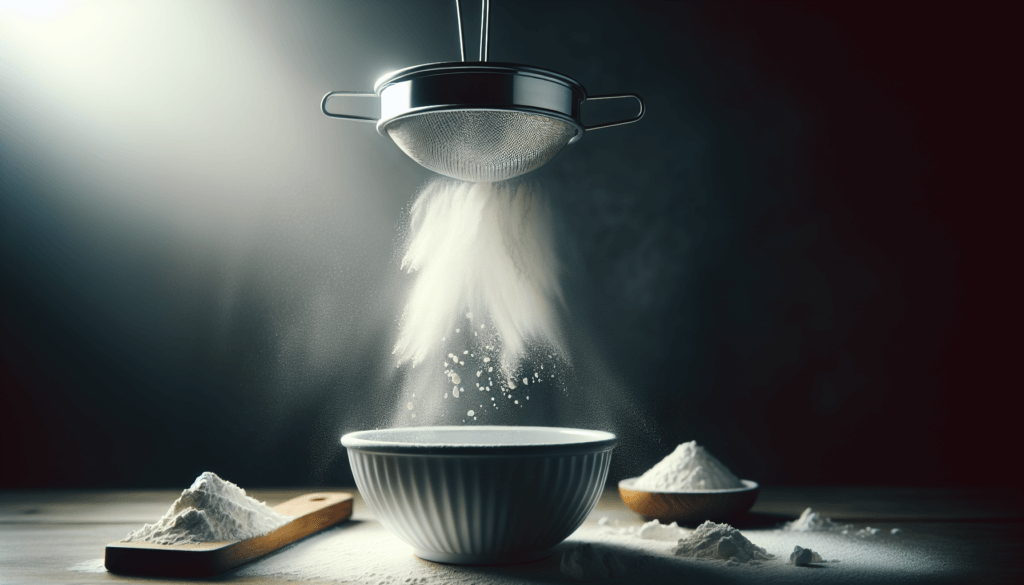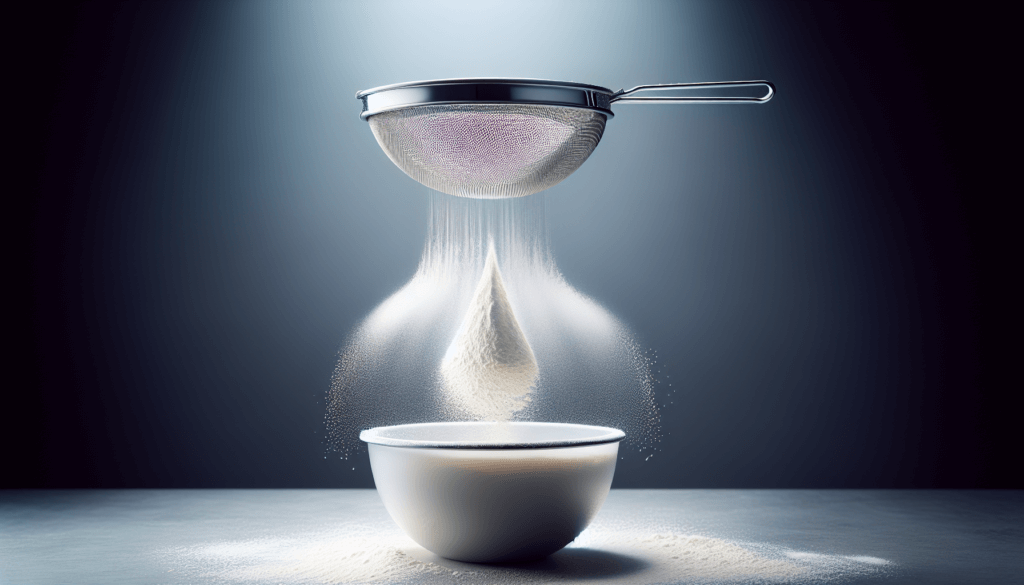If you’ve ever stood in awe of a beautifully light and airy sponge cake, wondering how it’s achieved, wonder no more. In this article, you’ll discover the secrets to perfecting the art of baking these delightful treats. From the importance of precise measuring to the ideal mixing technique, we’ll guide you through the steps to create a sponge cake that’s not only visually stunning but also irresistibly light and fluffy. Get ready to impress your friends and family with your newfound baking skills!
Choosing the Right Ingredients
Selecting the Right Flour
When it comes to baking a light and airy sponge cake, selecting the right flour is crucial. Cake flour is the ideal choice for sponge cakes as it has a lower protein content compared to all-purpose flour. This low protein content ensures a tender and delicate texture in the final cake. Look for cake flour in the baking aisle of your local grocery store or consider making your own by combining all-purpose flour with cornstarch.
Using the Ideal Sugar
To achieve the perfect balance of sweetness and tenderness in your sponge cake, it’s important to choose the right type of sugar. Fine granulated sugar is commonly used in sponge cake recipes as its fine texture allows for better incorporation into the batter. Avoid using confectioners’ sugar as it contains cornstarch, which can affect the texture of the cake. If you prefer a slightly caramelized flavor, you can also use superfine or caster sugar.
Picking the Perfect Butter
Butter plays a vital role in adding richness and flavor to your sponge cake. When selecting butter, opt for unsalted butter as it allows you to control the amount of salt in your recipe. Additionally, make sure the butter is at room temperature before creaming it with the sugar. Softened butter will mix more easily and create a smoother batter. Avoid using margarine or spreads, as they usually contain added oils and water, which can negatively affect the texture of your cake.
Choosing the Best Eggs
Eggs act as the binding agent in a sponge cake and contribute to its light and airy texture. It’s essential to use fresh eggs at room temperature for the best results. Cold eggs can cause the batter to curdle or result in a heavy cake. To bring eggs to room temperature quickly, place them in a bowl of warm water for a few minutes. If you have the option, consider using organic or free-range eggs for a superior flavor and texture.
Adding Leavening Agents
Leavening agents are responsible for giving sponge cakes their characteristic rise and airy texture. Baking powder and baking soda are the most commonly used leavening agents in sponge cake recipes. Make sure your leavening agents are fresh, as old ones may not be as effective in giving your cake the desired lift. It’s important to follow the recipe’s instructions for the recommended amount of leavening agents, as too much or too little can affect the texture and taste of the cake.
Prepping and Mixing the Batter
Sifting the Dry Ingredients
Sifting the dry ingredients, especially the flour, is an essential step in preparing the batter for a sponge cake. Sifting helps to remove any lumps and aerates the flour, resulting in a lighter texture. Use a fine-mesh sieve or flour sifter to sift the flour, baking powder, and any other dry ingredients the recipe calls for. This process not only ensures a smooth batter but also helps with the even distribution of the leavening agents.
Creaming the Butter and Sugar
Creaming the butter and sugar together is a crucial step in creating a light and fluffy sponge cake. The creaming process incorporates air into the butter and sugar mixture, which helps to create a tender and airy cake. To achieve the best results, use an electric mixer on medium-high speed and beat the butter and sugar until light and fluffy, typically for about 3-5 minutes. The mixture should appear pale and have a soft, creamy consistency.
Incorporating the Eggs
Properly incorporating the eggs into the batter is key to achieving an even texture in your sponge cake. The eggs should be added one at a time, allowing each egg to fully incorporate before adding the next. This process ensures that the eggs are evenly distributed throughout the batter and prevents any curdling. Be sure to scrape down the sides of the mixing bowl occasionally to ensure all the ingredients are well combined.
Folding in the Flour Mixture
To maintain the airiness of the batter, it’s crucial to fold in the flour mixture gently. Overmixing at this stage can result in a dense and heavy cake. The folding technique involves using a spatula or a large spoon to gently incorporate the dry ingredients into the wet ingredients. Make sure to use a light hand and a swirling motion to fold the flour mixture into the batter. Stop folding once the dry ingredients are barely incorporated, ensuring you don’t overmix.
Adding Flavor Enhancers
While sponge cakes are known for their simple elegance, adding flavor enhancers can take your cake to the next level. Consider incorporating ingredients such as vanilla extract, citrus zest, or even almond extract to infuse your sponge cake with delightful flavors. Be cautious not to use too much, as strong flavors can overpower the delicate nature of the cake. Add these flavor enhancers according to the recipe’s guidelines, and taste-test the batter if necessary.

Understanding the Mixing Techniques
Creaming Method
The creaming method is a popular mixing technique used to create tender and airy sponge cakes. It involves beating together the butter and sugar until light and fluffy, followed by gradually adding the eggs and dry ingredients. Creaming helps to incorporate air into the batter, resulting in a soft and tender crumb.
Sponge Method
The sponge method, also known as the whisking method, is an alternative technique to achieve a light and airy sponge cake. Instead of creaming the butter and sugar, this method focuses on beating eggs, sugar, and occasionally other liquids together until light and fluffy. Afterward, the dry ingredients are folded in gently, maintaining the airiness of the batter.
Whisking Method
Similar to the sponge method, the whisking method relies on beating the eggs and sugar until they become light and airy. However, the difference lies in the addition of the melted butter, which is gradually incorporated into the egg mixture. This method produces a sponge cake with a moist and tender texture.
Foam Method
The foam method utilizes beaten egg whites to create the desired lightness in a sponge cake. The egg whites are whipped separately until stiff peaks form, and then they are gently folded into the batter. This technique results in an exceptionally light and ethereal sponge cake.
Genoise Method
The Genoise method is a traditional French technique that involves whisking whole eggs and sugar over a water bath until the mixture reaches a ribbon-like consistency. The batter is then gently folded together with sifted flour. This method produces a sponge cake with a slightly denser texture but is incredibly tender and perfect for layered cakes.
Baking the Sponge Cake
Preheating the Oven
Before baking your sponge cake, it’s essential to preheat your oven to the specified temperature in the recipe. Preheating ensures that the oven reaches the correct temperature and creates a stable environment for the cake to rise evenly. Allow the oven to preheat for at least 10-15 minutes before placing your cake inside.
Preparing the Cake Pan
Properly preparing the cake pan is crucial to ensure easy removal of the cake and prevent it from sticking to the sides or bottom. Grease the pan with butter or cooking spray, making sure to coat every nook and cranny. For added insurance, you can also line the bottom of the pan with parchment paper. This step will make it easier to remove the cake from the pan later.
Pouring the Batter
When pouring the batter into the cake pan, ensure that it is evenly distributed for a uniform rise. Use a spatula or the back of a spoon to level the batter and remove any air pockets. Gently tap the cake pan on the countertop a few times to release any trapped air bubbles. This will promote uniform baking and an even texture in the finished cake.
Ensuring Even Heat Distribution
Even heat distribution is essential for baking a sponge cake to perfection. Place the cake pan in the center of the oven, allowing for proper air circulation. If you’re baking multiple cake pans at once, make sure there is enough space for the heat to flow around each pan. Consider rotating the pans halfway through the baking time to ensure equal exposure to heat.
Avoiding Common Baking Mistakes
To ensure the best results, it’s essential to avoid some common baking mistakes. Firstly, avoid opening the oven door excessively during baking, as this can cause fluctuations in temperature and affect the rise of the cake. Additionally, resist the temptation to overbake your sponge cake, as this can result in a dry and crumbly texture. Use a toothpick or cake tester to check for doneness by inserting it into the center of the cake – if it comes out clean or with a few crumbs, the cake is ready.

Achieving Lightness and Airiness
Proper Incorporation of Ingredients
To achieve lightness and airiness in your sponge cake, it’s crucial to properly incorporate the ingredients. Be attentive when measuring each ingredient accurately, as even slight variations can affect the final result. Follow the mixing techniques outlined in the recipe diligently, ensuring that each step is executed with care.
Avoiding Overmixing
Overmixing can be detrimental to the light and airy texture of a sponge cake. Once the flour is added to the batter, only fold it until the dry ingredients are barely combined. Overmixing can develop gluten and lead to a dense and chewy cake. Remember to use a gentle hand and avoid excessive stirring or vigorous mixing.
Controlling Oven Temperature
Maintaining a consistent oven temperature throughout the baking process is crucial for achieving lightness and airiness in your sponge cake. Invest in an oven thermometer to ensure accuracy. If needed, adjust the temperature accordingly. Avoid opening the oven door frequently, as this can cause temperature fluctuations that may negatively impact the cake’s rise.
Appropriate Cooling Techniques
Proper cooling techniques are essential to preserve the light and airy texture of your sponge cake. Once the cake is baked, remove it from the oven and let it cool in the pan for about 10 minutes. Then, gently invert the pan and transfer the cake to a wire rack to cool completely. Allowing the cake to cool upside down helps maintain its height and prevent it from sinking.
Utilizing Correct Baking Equipment
Using the right baking equipment can contribute to achieving lightness and airiness in your sponge cake. Invest in quality cake pans that distribute heat evenly. Non-stick pans are particularly helpful in ensuring easy release of the cake. Additionally, use the appropriate size of cake pans as mentioned in the recipe, as the pan size can affect the baking time and overall texture of the cake.
Troubleshooting Sponge Cake Issues
Cake Collapsed or Sunken
If your sponge cake collapses or sinks in the center, it may be due to underbaking or removing the cake from the oven too soon. It’s crucial to bake the cake for the proper time, allowing it to set and firm up. Avoid opening the oven door prematurely, as it can cause temperature fluctuations and ultimately lead to a collapsed cake. Make sure to test for doneness using a toothpick or cake tester before removing the cake from the oven.
Dense and Heavy Texture
A dense and heavy texture in your sponge cake can result from several factors. Overmixing the batter can develop gluten, resulting in a dense and chewy cake. Ensure that you fold in the dry ingredients just until combined and avoid overmixing. Additionally, using expired or inadequate leavening agents can cause the cake to be dense. Make sure to use fresh and properly measured baking powder or baking soda.
Cracked or Uneven Top
A cracked or uneven top can occur when the cake rises too rapidly during baking. This can be caused by various factors, such as an oven that is too hot or using too much leavening agent. Ensure that your oven is properly calibrated and that you’re using the recommended amount of leavening agent. Additionally, avoid overmixing the batter, as this can lead to uneven rising and cracking on the surface.
Too Dry or Stale
If your sponge cake turns out too dry or stale, it may have been overbaked. When baking sponge cakes, it’s important to pay close attention to the baking time and check for doneness using a toothpick or cake tester. Overbaking can result in a dry and crumbly texture. To prevent this, remove the cake from the oven as soon as a toothpick inserted into the center comes out clean or with a few crumbs.
Sticky or Gummy Interior
A sticky or gummy interior in your sponge cake can be a sign of underbaking. It’s crucial to ensure that the cake is fully baked before removing it from the oven. Use a toothpick or cake tester to check the center of the cake – it should come out clean or with a few crumbs. If the cake is underbaked, return it to the oven for an additional few minutes, keeping a close eye on it to prevent overbaking.

Adding Moisture and Flavor
Simple Syrup Soaking
An excellent way to add moisture and enhance the flavor of your sponge cake is by soaking it with a simple syrup. Create a simple syrup by dissolving equal parts sugar and water in a saucepan over medium heat. Once the syrup is cooled, brush it onto the cooled cake layers before assembling the cake. This technique ensures a moist and flavorful sponge cake.
Fruit Puree or Juice Infusion
Fruit purees or juices can add both moisture and flavor to your sponge cake. Consider incorporating pureed fruits or adding fruit juice to the batter to infuse it with delightful flavors. When using fruit puree, reduce the quantity of other liquids in the recipe to maintain the desired consistency. This technique provides a vibrant and fruity twist to your sponge cake.
Using Flavor Extracts
Flavor extracts are a simple yet effective way to enhance the taste of your sponge cake. Vanilla extract is a popular choice, but you can also experiment with other extracts like almond, lemon, or orange. Add the extract to the batter according to the recipe’s guidelines, starting with a small amount and adjusting to taste. These extracts bring a burst of flavor to your sponge cake and complement various fillings and frostings.
Layering with Fillings
Adding fillings between the layers of your sponge cake can not only add moisture but also elevate the flavor profile. Consider incorporating fruit preserves, whipped cream, chocolate ganache, or buttercream as fillings. The contrasting textures and flavors between the layers will create a truly delightful experience for your taste buds.
Dusting with Powdered Sugar
For a simple yet elegant touch, dust your sponge cake with powdered sugar before serving. The delicate, snowy-white dusting adds a subtle sweetness and a visually appealing finish to the cake. Simply use a fine-mesh sieve or a handheld sifter to evenly distribute the powdered sugar over the top of the cake.
Perfecting the Frosting
Choosing the Right Frosting Type
Selecting the right frosting for your sponge cake can elevate its taste and appearance. Consider the overall flavor profile of the cake and choose a frosting that complements it. Popular options include buttercream, cream cheese frosting, whipped cream-based frostings, or even ganache. Each type of frosting brings its own unique qualities, so choose one that aligns with your preferences and the occasion.
Whipping Cream-Based Frostings
Whipped cream-based frostings such as stabilized whipped cream or mousseline buttercream are ideal for those seeking a lighter and less sweet option. These frostings provide a silky and delicate texture that beautifully complements the spongy nature of the cake. Whip the cream or butter until stiff peaks form, and then gently fold in your choice of flavorings to create a luscious topping.
Cream Cheese Frosting
Cream cheese frosting adds richness and tanginess to your sponge cake. This classic frosting pairs exceptionally well with citrus-flavored cakes or ones that contain spices like cinnamon or nutmeg. The creamy and smooth texture of the cream cheese frosting adds another layer of decadence to your light and airy sponge cake.
Buttercream Varieties
Buttercream frostings come in a variety of flavors and textures, making them a versatile option for sponge cakes. Swiss meringue buttercream, Italian meringue buttercream, or American buttercream can all be used to frost sponge cakes. The silky smooth texture and buttery flavor of these frostings perfectly complement the light and fluffy cake layers.
Decorating Techniques
Once you have chosen and prepared your frosting, it’s time to unleash your creativity and decorate your sponge cake. Use a piping bag and various tips to create intricate patterns, swirls, or flowers on top of the cake. You can also use a spatula or an offset spatula to create smooth and clean finishes. Adding edible decorations such as fresh fruits, chocolate shavings, or edible flowers can further enhance the visual appeal of your cake.

Storing and Serving Sponge Cakes
Proper Storage Techniques
To maintain the freshness and quality of your sponge cake, proper storage techniques are crucial. Once the cake is completely cooled, wrap it tightly with plastic wrap or place it in an airtight container. Store the cake at room temperature in a cool and dry area. Avoid storing it in the refrigerator, as this can dry out the cake.
Freezing and Defrosting
If you need to store your sponge cake for an extended period, consider freezing it. Place the cooled cake in a freezer-safe container or wrap it tightly with multiple layers of plastic wrap. To defrost the cake, transfer it to the refrigerator and let it thaw slowly. This process will help retain moisture and prevent the cake from drying out.
Maintaining Freshness
To maintain the freshness of your sponge cake, it’s best to consume it within a few days of baking. Sponge cakes are delicate and can dry out quickly, so make sure to store them properly. If your cake does become slightly dry, you can revive it by brushing each layer with a simple syrup before assembling or serving.
Presenting and Plating
When plating your sponge cake, take the time to present it beautifully. Carefully transfer the cake to a serving platter or cake stand, ensuring it is centered. Use a cake lifter or two flat spatulas to support the cake during the transfer. Consider adding a garnish, such as fresh fruits, mint leaves, or edible flowers, to enhance the overall presentation.
Accompaniments and Complementary Flavors
Sponge cakes pair well with a variety of accompaniments and complementary flavors. Serve slices of sponge cake with a dollop of whipped cream or a scoop of vanilla ice cream. Fresh berries, fruit coulis, or a drizzle of chocolate sauce can further enhance the flavors and textures. Consider the tastes and preferences of your audience when selecting accompaniments to create a harmonious dessert experience.
Experimenting with Variations
Adding Fruits or Nuts
Incorporating fruits or nuts into your sponge cake batter can add exciting flavors and textures. Consider folding in diced fruits, such as strawberries, blueberries, or peaches, into the batter. You can also add chopped nuts, such as almonds, walnuts, or pistachios, for a delightful crunch. Make sure to adjust the moisture content of the batter accordingly when adding these additional ingredients.
Incorporating Chocolate
Chocolate lovers can indulge in the decadence of a chocolate sponge cake. By replacing a portion of the flour with cocoa powder or melted chocolate, you can infuse your sponge cake with rich chocolate flavor. Consider adding chocolate chips or a chocolate ganache filling for an extra dose of chocolatey goodness.
Using Citrus Zest
Citrus zest adds a burst of freshness and aromatic flavor to your sponge cake. Incorporate the zest of lemons, limes, or oranges into the batter for a delightful twist. Alternatively, you can add grated ginger or cinnamon to enhance the warmth and depth of the flavor.
Infusing with Floral Flavors
Infusing your sponge cake with floral flavors can create an exquisite taste experience. Consider using rosewater, lavender extract, or orange blossom water to infuse delicate floral notes into your cake. These subtle flavors add a touch of elegance and sophistication to your sponge cake.
Creating Exotic Flavor Combinations
Don’t be afraid to experiment and create unique flavor combinations for your sponge cake. Mix different fruits, spices, or extracts together to create distinct and memorable flavors. Consider combinations like raspberry and lime, cardamom and pistachio, or coconut and passion fruit. With a little creativity, the possibilities are endless in creating your own signature sponge cake.



